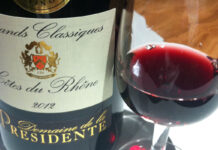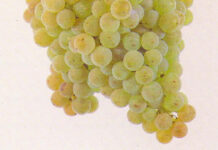Luke Richardson is a sommelier who has worked in a range of venues across the UK in a career spanning more than 20 years. He is now wine buyer/cheese fanatic at IJ Mellis Cheese. In his column for SLTN he shares his thoughts on all things wine-related and answers your questions about wine. If you have a question for Luke email it to sltn@peeblesmedia.com

Hi again all.
Now that the smell of the summer is in the air, I thought I would talk about a great (and currently very fashionable) wine to tempt your punters with – Vinho Verde.
Until quite recently, this wine from the far north of Portugal was fairly non-descript – light, fresh, spritzy and cheap, but over the last 15 years or so it has started to become much more of a pleasant beverage, albeit slightly higher in cost.
Most of this change has occurred because of the success of Albariño just over the border in Rias Baixas in Galicia, Spain, which commands a much better price and has found worldwide success – really putting Spain on the map for white wines.
The areas surrounding Rias Baixas have all benefitted from this success, and Vinho Verde more than most.
Many grape varieties are allowed in the production of this wine, but I’ll concentrate on the top four – Alvarinho (Portuguese translation of Albariño) has a peachy and slightly peppery flavour, Loureiro gives soft textured pear fruit, Trajadura (or Treixadura in Spain) gives a floral note and Arinto is the main bulk grape used, giving the volatile acidity that leaves this wine with a little spritz on the tip of your tongue as you drink it.
As I mentioned, the price has increased as the producers have started to use more of the higher quality grapes, but it still offers really good value for money. You can find a pretty good one for around £6.50/£7 ex vat – which in today’s market isn’t a huge amount of cash for something truly delicious.
Another good aspect of this style of wine is that, along with being light and fresh and refreshing, it is also normally quite low alcohol at around 11% ABV, which fits nicely into another ongoing trend, and means your guests are more than likely to order another glass!
There are many different flavour profiles to Vinho Verde nowadays, but my favourite are wines made with a high proportion of either Alvarinho or Loureiro, or both.
Predominantly Alvarinho-based wines are a bit peachier, and a little more linear than the fleshy, pear-fruited Loureiro-based wines, but they offer really great value for money and are marginally better with seafood.
But I prefer the slightly softer fruited Loureiro-based wines. They’re meant to have the touch of spritz to them, by the way – it comes from very high volatile acidity in the wines – but as the wines age in bottle the spritzy nature subsides. Unusually, it is the very youngest wines that you want to sell out, so try to get the 2022 vintage if possible.
These are quite hedonistic wines, not to be mulled over but instead designed to be quaffed with friends and lots of little plates of food – and, most importantly, very easy to sell!
Until next time, happy Vinho Verde-ing!



















